In Boulder, Colorado—a city that experienced the devastating Great Flood of 2013—effective drainage isn’t just a convenience; it’s a necessity. That historic event served as a wake-up call to many homeowners about the importance of managing water flow around their property. While such extreme events are rare, even routine rainstorms can lead to water damage, soil erosion, or foundation issues if proper drainage is lacking.
Good drainage helps keep water away from your home’s foundation, reduces the risk of basement flooding, and prevents landscape erosion. Combine Boulder’s varied terrain from the foothills to the flatter eastern neighborhoods with our somewhat impermeable clay soils, runoff can be fast and unpredictable. Without well-planned drainage, a heavy storm can cause significant and costly damage.
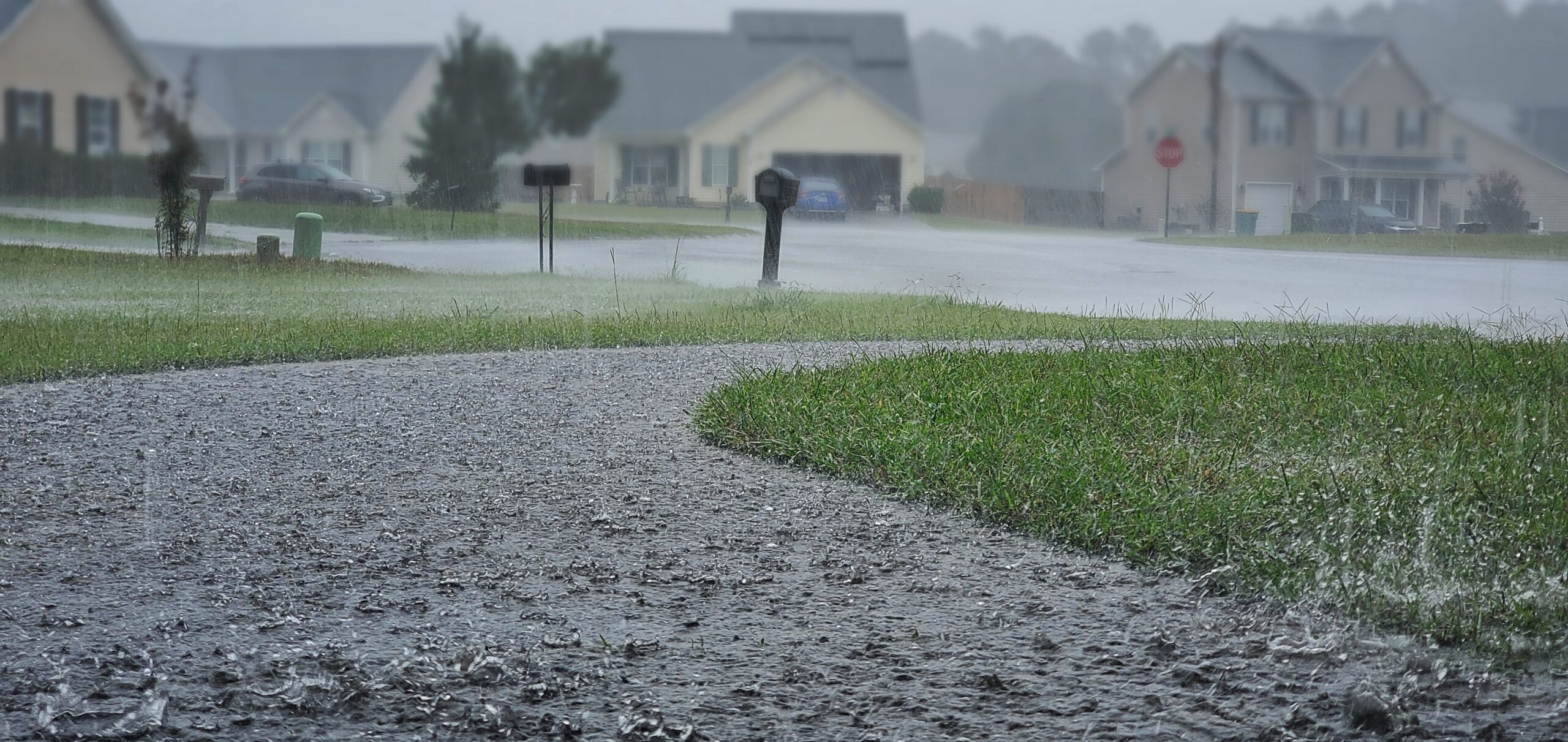
In Boulder’s climate and flood history, being proactive about drainage isn’t just smart—it’s essential. Whether it’s fine-tuning your gutters or installing a full French drain system, the right drainage solution can protect your investment and give you peace of mind during the next big storm.
Drainage System Basics 101
Let’s run through some of the basic and most common drainage components and solutions utilized in modern landscapes.
#1 Grading
If you see pooling near the foundation as pictured below, there is probably trouble on the horizon and you should come up with a plan to resolve the issue sooner than later. The slope of your yard should always direct water away from your home’s foundation. When it doesn’t, regrading and relandscaping may be the right next step. Alternatively or in addition, a foundation drain may around the home’s foundation may be part of the solution. Both solutions require a lot of work and can be quite costly. If your lucky, you may be able to get away with a less expensive solution, the installation of catch basins and drain pipe below the downspouts. Either way, make sure you hire experienced professionals for both design and installation to ensure the best and most effective outcomes.
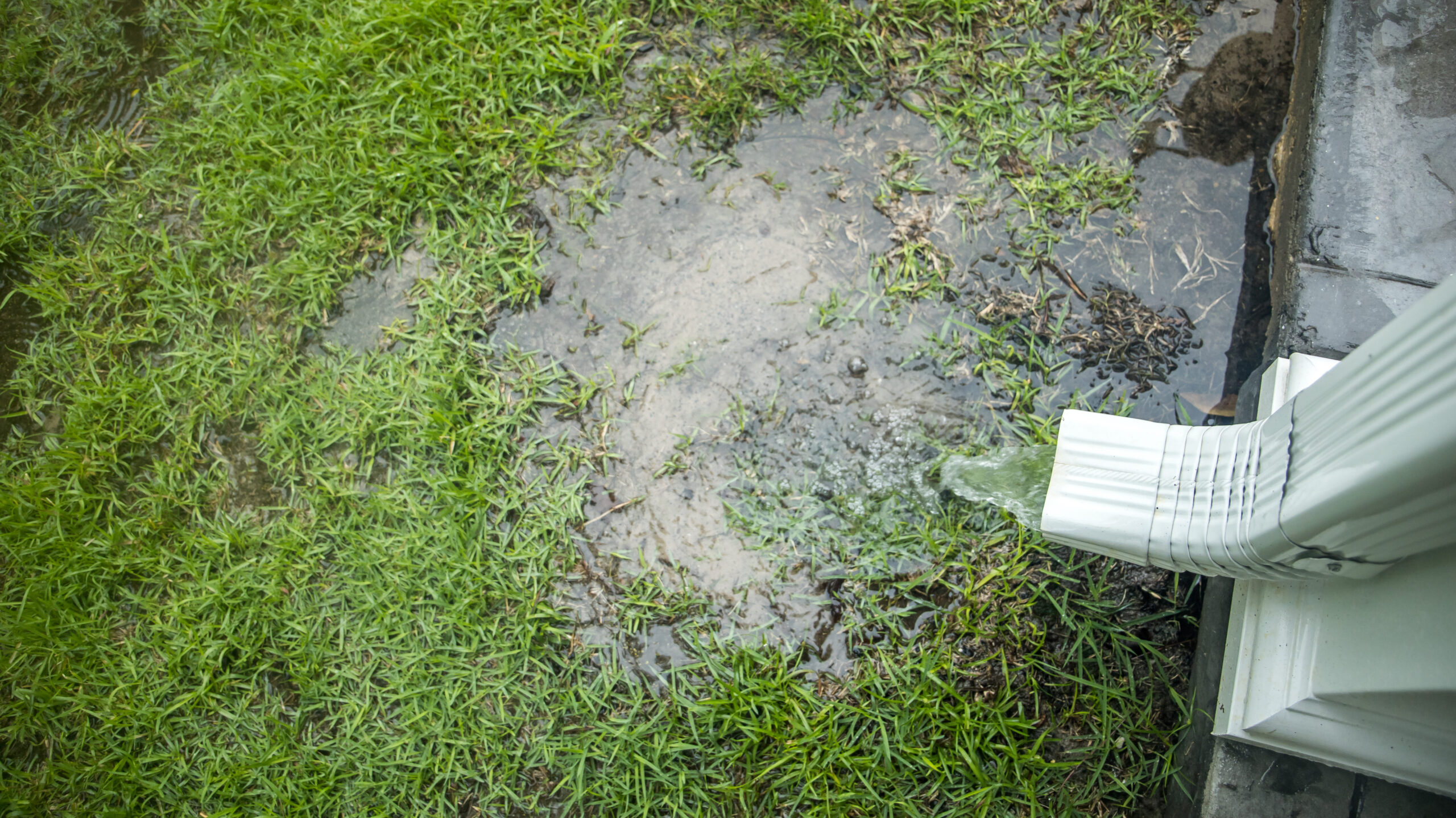
#2 Gutters and Downspouts
These are the first line of defense. Properly sized and maintained gutters should evacuate roof runoff safely away from the foundation. Consult with a reputable landscape design-build professional to discuss best solutions. A common and effective solution may be the installation of catch basin (see picture below).
#2 Catch Basins
Capture devices such as a catch basin collect excess stormwater in low spots or below downspouts and direct it to drain pipes below ground. And they do more than catch and transfer water, they capture debris that might otherwise settle inside drain pipes. With their removeable grates, catch basins are easy to clean out and help keep drainage systems free of debris.

#3 Channel & Trench Drains
Standing water on hardscapes can lead to slip hazards, pest breeding grounds, erosion and freeze-thaw damage to hardscapes. Like catch basins, these long and narrow drains intercept, collect, and convey runoff to drain pipes, ultimately reducing runoff on the property. Decorative grates, plastic or metal, are readily available and can add architectural beauty and interest to any outdoor living or gathering space.
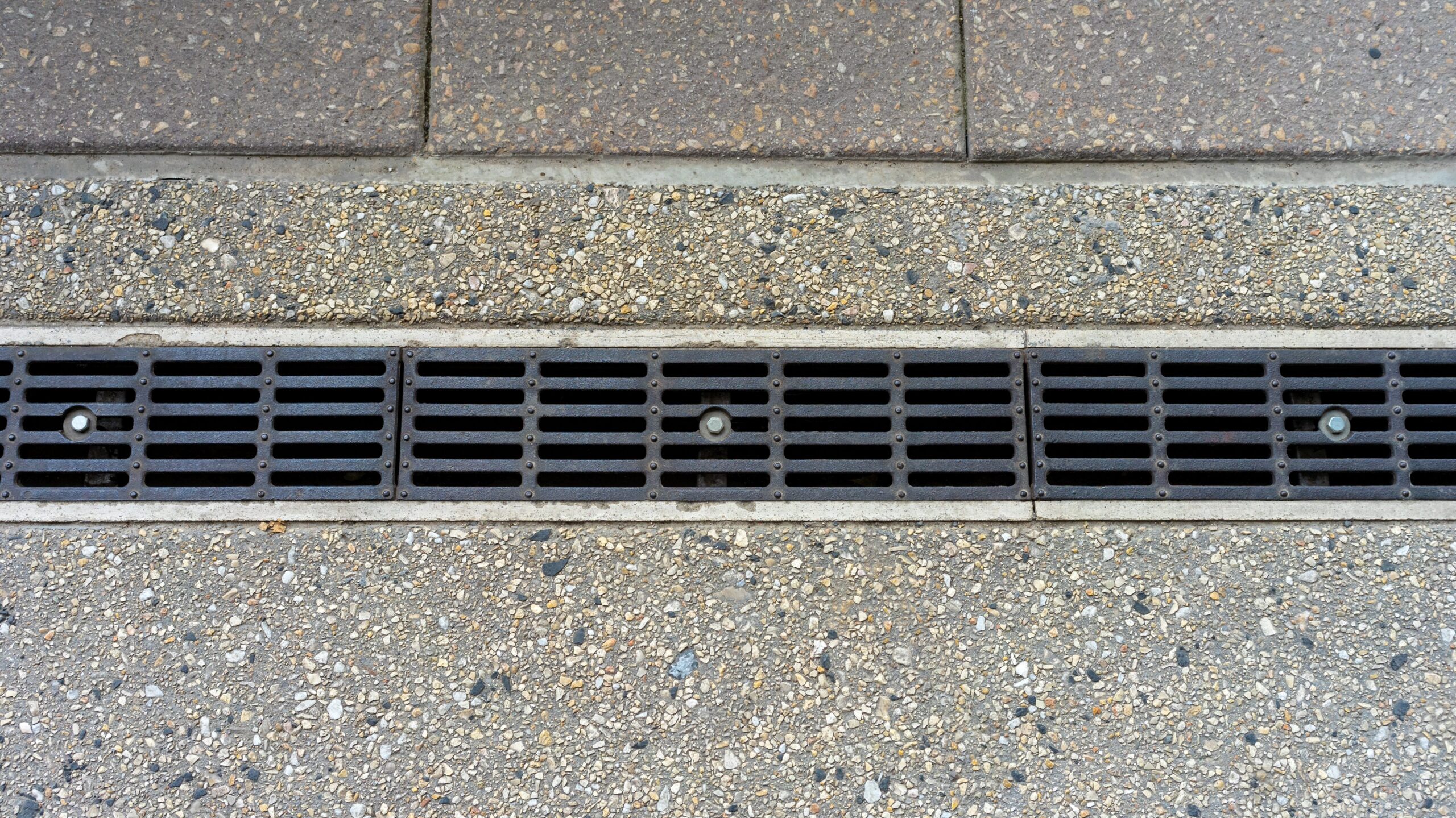
#4 French Drains
The term “French Drain” has nothing to do with France—the name “French” simply comes from Henry Flagg French, an American lawyer, judge, and farmer who popularized this drainage method in his 1859 book Farm Drainage. A French drain is a trench filled with gravel or rock that contains a perforated pipe designed to redirect surface water and groundwater away from a specific area. It helps prevent water accumulation around foundations, basements, or soggy yards by allowing water to flow through the gravel and into the pipe, which then carries it away to a safe drainage location.
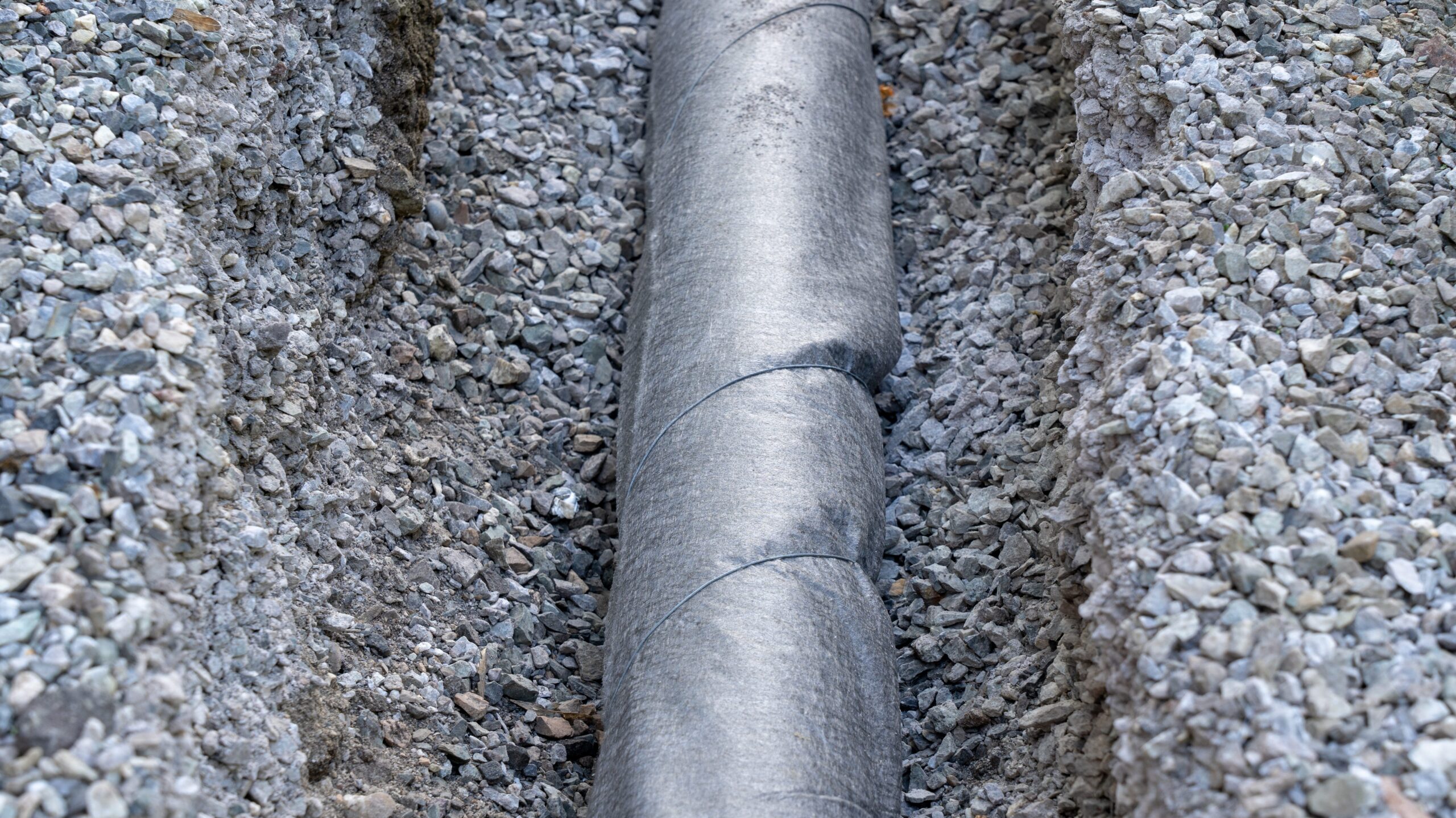
#5 Drywell
A drywell is an underground structure designed to collect and disperse stormwater runoff or excess groundwater into the surrounding soil, helping to prevent flooding and erosion. Typically filled with gravel or a specialized container, drywells allow water to slowly percolate back into the ground. The Flowell system enhances this process by serving as a durable, modular drywell solution that efficiently manages drainage while also allowing for easy installation and maintenance. Flowell units can be stacked or configured to meet specific site needs, making them ideal for residential, commercial, or landscape applications.
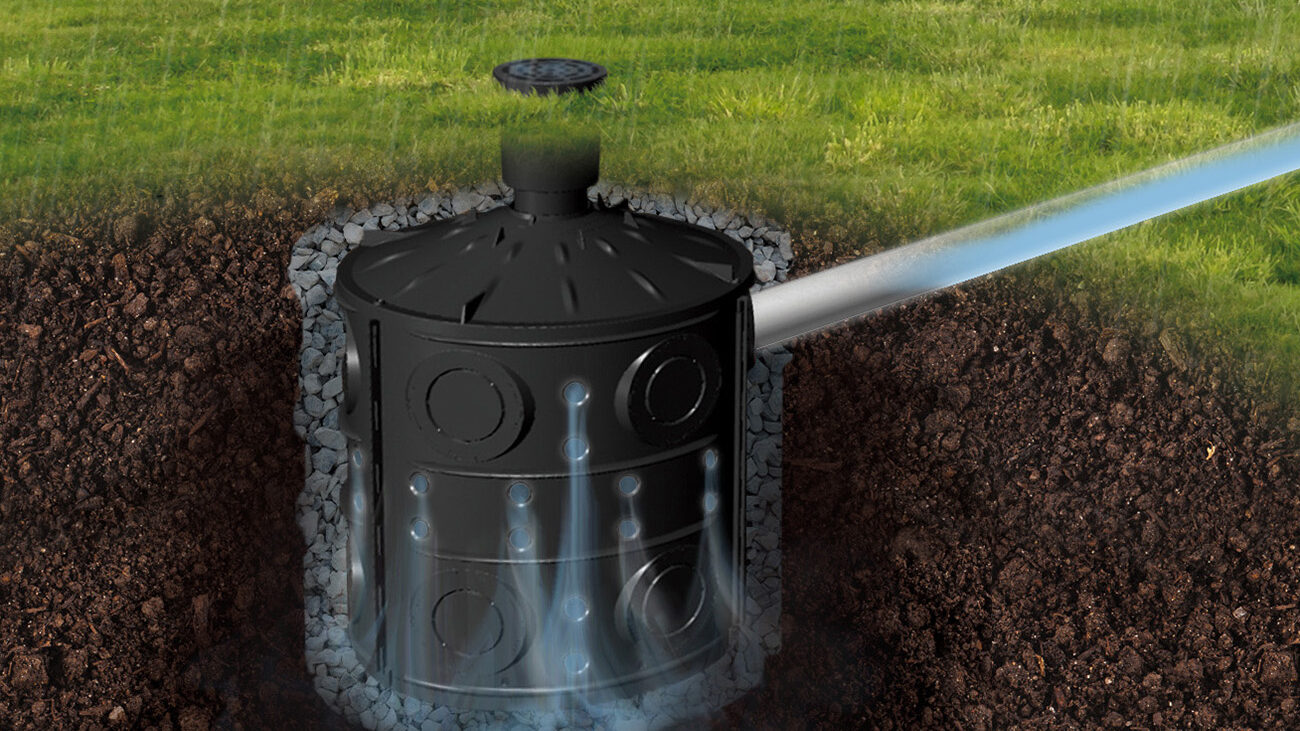
#6 Pop-Up Drain Emitters
Water captured in your drainage system needs a point of release. The pop-up emitter works at a low point of the drainage system to discharge water collected from upstream and helps protect property from water damage. As water pressure builds, the cap pops up to disperse water and closes once the flow diminishes.
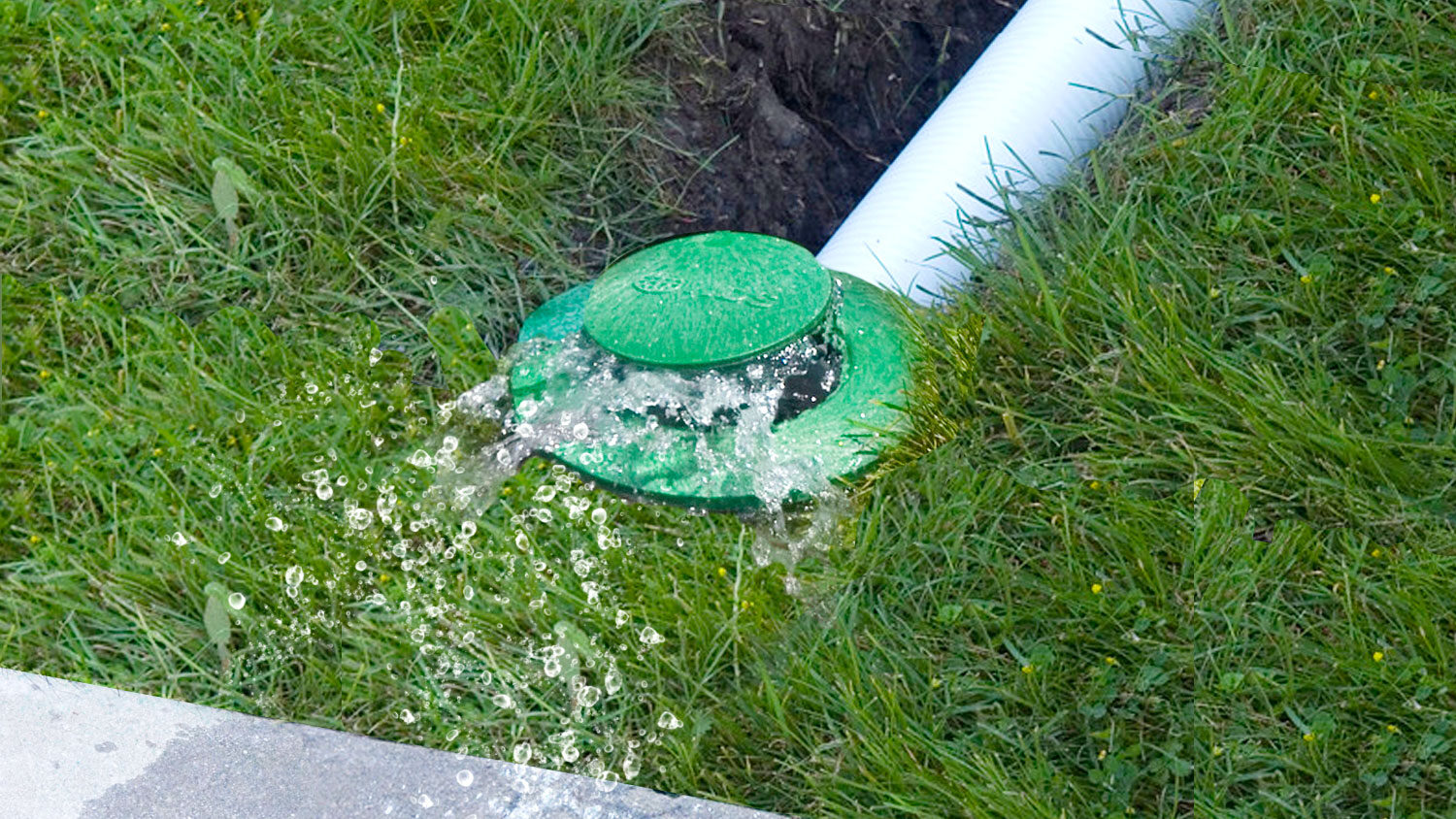
#7 Swales and Dry Creek Beds
Shallow ditches or depressions that direct water away from structures and toward designated drainage zones or streets. With a nice design and well executed installation swales and dry creek beds can add beauty and interest to a landscape.
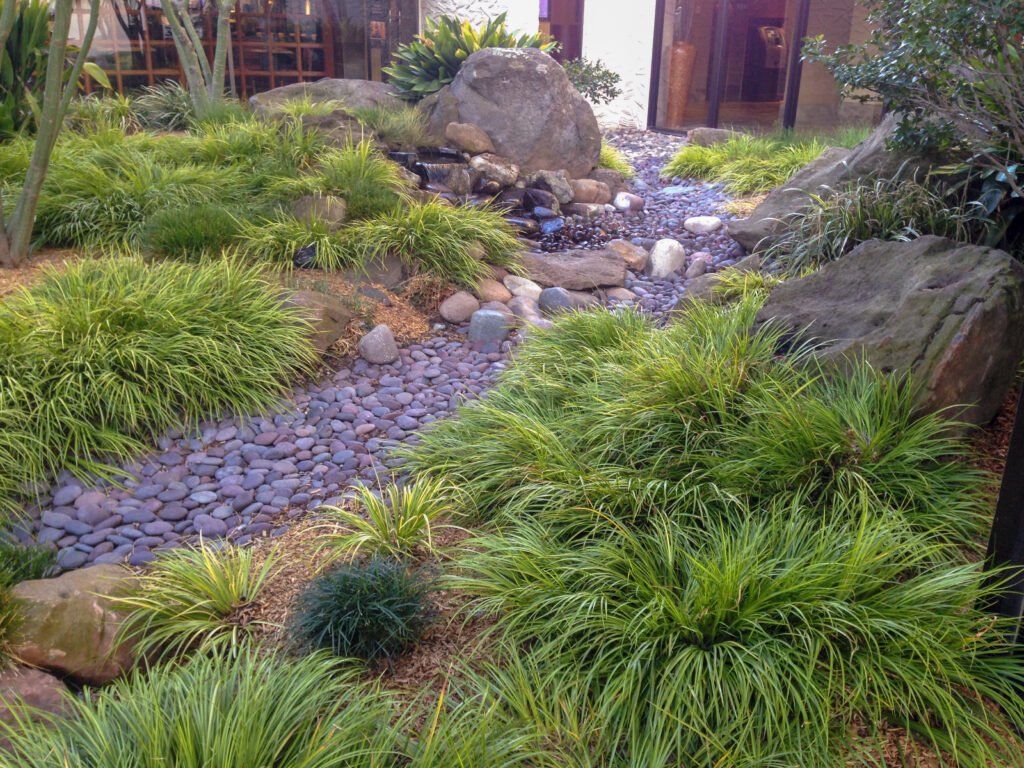
How to Inspect for Drainage Issues
Regular inspection is key, especially after storms. Look for:
- Pooling water near your foundation
- Erosion marks or exposed roots in your yard
- Basement dampness or musty odors
- Overflowing gutters or downspouts discharging too close to the house
Pro Tip: The best time to inspect is during or immediately after a rainstorm. This gives you a clear picture of how water behaves on your property, allowing you to spot issues that may be invisible when it’s dry.
Get In Touch
To schedule a consultation or request services please call 303-245-9166, send an email to info@nativeedgelandscapes.com or Get In Touch through our website. One of our Customer Care Representatives will be happy to help.

